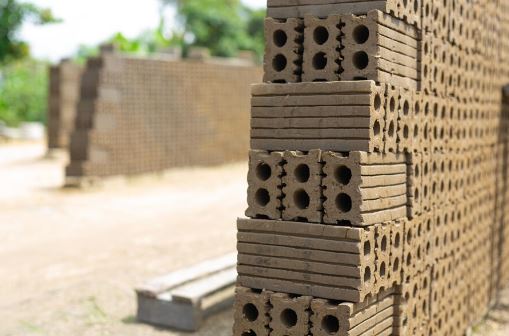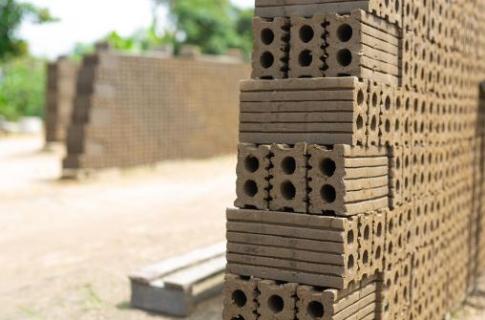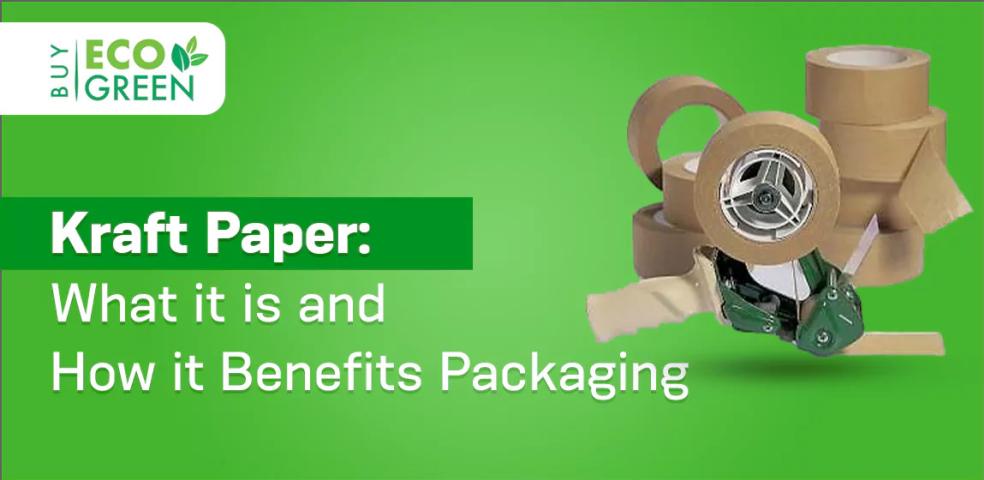In an era when environmental sustainability is of utmost importance, the construction industry is undergoing transformational change. While traditional building materials such as brick and mortar are more durable and long-lasting, the environmental impact is greater.
The extraction, manufacture and transportation of these materials contributes to increased carbon emissions and reduced resources. Environmentally friendly building materials are becoming increasingly popular to address these concerns. This guide examines the availability, benefits and contribution of various environmentally friendly products to green design.
Understanding Eco-Friendly Building Materials:
Eco-friendly building materials are those that reduce environmental impact through their life cycle from manufacturing to disposal. These products are generally derived from renewable sources, require less energy to produce, and reduce waste and emissions. The main characteristics of eco-friendly materials are durability, recyclability, low toxicity and energy efficiency.
Categories of Eco-Friendly Building Materials
1. Natural Building Materials:
a. Bamboo:
Bamboo is a highly renewable resource, growing faster than traditional wood. It is durable, flexible and can be used in a variety of construction projects including floors, walls and building supports. Growing bamboo also helps sequester carbon, making it a carbon-free resource.
b. Cork:
Cork is obtained from the bark of oak trees, and is a renewable and recyclable resource. Used for flooring, insulation and as a sound barrier. Corks can be harvested without harvesting, allowing them to continue absorbing carbon dioxide.
c. Straw Bales:
Straw bales are a by-product of rice agriculture and provide excellent protective properties. It is used in wall construction and is energy efficient, reducing unnecessary heating and cooling. Building straw bales also encourages the use of local resources, and reduces vehicle emissions.
2. Recycled Materials:
a. Recycled Steel:
Steel is one of the most recycled materials in the world. Recycled steel can be used in construction, reducing the need for new steel. Not only does this conserve raw materials, it also significantly reduces energy consumption and greenhouse gas emissions.
b. Recycled Plastic:
Plastic waste can be recycled into wood composite, insulation and roofing tile and other building materials. The use of recycled plastics helps reduce waste disposal and the demand for raw plastics, which are energy-intensive and non- polluting.
c. Reclaimed Wood
Reclaimed wood is sourced from old buildings, bridges and other structures. It adds a unique aesthetic to new construction and reduces the need for new trees, preserving forests and reducing carbon footprints associated with harvesting and processing trees.
Also Read : WHAT ARE REFRACTORY BRICK AND THEIR APPLICATIONS?
3. Innovative Eco-Friendly Materials:
a. Hempcrete:
Hempcrete is a bio-composite blended with a powder-based binder derived from the fibers of the hemp plant. It’s lightweight, protective, and carbon-negative, because the hemp plant absorbs carbon dioxide as it grows. The walls are made of hempcrete, which provides heat and sound insulation.
b. Ferrock:
Ferrock is a durable concrete alternative made from recycled materials, including metal dust and silica. It is stronger than traditional concrete and absorbs carbon dioxide as it is produced, making it carbon negative. Ferroc is used in building products, reducing the carbon footprint of the construction industry.
c. Mycelium:
Mycelium, the root component of fungi, can be grown in pots to make lightweight, biodegradable building materials. Mycelium-based products are used for insulation, wall panels and even furniture. They are renewable, compostable and require little energy to produce.
Benefits of Eco-Friendly Building Materials
A. Environmental Benefits:
a. Reduced Carbon Footprint:
Eco-friendly products generally have low physical energy, which means they require less energy to produce and transport. Materials such as bamboo, hemp, and recycled metal help reduce greenhouse gas emissions from manufacturing.
b. Conservation of Natural Resources:
The use of renewable energy and recycling helps conserve limited natural resources. Bamboo, for example, is recycled faster than traditional wood, and recycling reduces unnecessary virgin materials.
c. Waste Reduction:
Many environmentally friendly or recyclable products are made from waste at the end of their life. This reduces the amount of construction and demolition waste sent to landfills.
Also Read : Smart Construction Technology
B. Health Benefits:
a. Improved Indoor Air Quality:
Natural and non-toxic materials such as cork and mycelium emit fewer volatile organic compounds (VOCs) and other harmful chemicals, creating a healthier indoor environment
b. Thermal and Acoustic Comfort:
Materials such as straw bales, hemp and cork provide excellent insulation and soundproofing, enhancing the comfort of the building’s occupants.
C. Economic Benefits:
a. Long-Term Savings:
While the cost of some environmentally friendly solutions can be significant, they often result in long-term savings through lower energy costs and lower maintenance costs. For example, well-insulated homes reduce heating and cooling costs.
b. Increased Property Value:
Buildings built using sustainable materials and practices tend to have higher market values due to increased consumer awareness and demand for green buildings.
Challenges and Considerations
1. Cost:
While eco-friendly materials can result in long-term savings, the initial cost can be higher than conventional materials. However, as technology improves and demand increases, prices are expected to become more competitive.
2. Availability:
Some eco-friendly products may not be readily available in all communities, potentially creating transport-related environmental issues. This issue can be mitigated by sourcing locally whenever possible.
3. Building Codes and Regulations:
Eco-friendly materials may not always meet existing building codes and standards, posing challenges for builders and homeowners. It’s important to work with architects and builders who are familiar with sustainable building practices to guide these codes.
Case Studies
a. Bullitt Center, Seattle
Dubbed the “greenest mall in the world,” the Bullitt Center in Seattle demonstrates the power of environmentally friendly materials. The building features FSC certified timber, recycled steel and advanced insulation. It generates its own energy through solar panels and collects rainwater for recycling.
b. The Edge, Amsterdam
Based in Amsterdam, The Edge is one of the most sustainable office buildings in the world, incorporating environmentally friendly features and state-of-the-art technology. It uses recycled materials, a green roof and energy-efficient systems to achieve a zero-energy environment.
c. Hemp House, Asheville
Located in Asheville, North Carolina, the Hemp House is made entirely of hempcrete. It provides excellent insulation, maintains waterproofing, and is carbon-free. The house exemplifies the benefits of using bio-based materials in construction.
Future Trends
Advancements in Material Science
Ongoing research in the physical sciences leads to the development of new and effective environmentally friendly products. Innovations such as 3D-printed, organic composites and self-healing concrete hold promise for future sustainable construction.
Circular Economy
The concept of a circular economy, of recycling and reusing is gaining momentum. This method aims to eliminate waste and create a closed system in construction projects.
Green Certifications and Standards
Green building construction certifications, such as LEED (Leadership in Energy and Environmental Design) and BREEAM (Building Research and Installation Environmental Assessment Method), encourage the use of environmentally friendly materials. These standards encourage architects to adopt sustainable practices and materials.
Conclusion:
Switching to environmentally friendly building materials is not only necessary to reduce the impact of construction on the environment but also provides many benefits in terms of health, safety and financial savings -Adopting these future-friendly products and practices is an important step towards mitigating climate change and promoting a healthier planet for future generations.
Adopting these measures and practices is an important step towards mitigating climate change and promoting a healthier planet for future generations. The construction industry plays a major role in global carbon emissions, and switching to sustainable construction practices can provide significant environmental benefits. This shift is driven not only by environmental concerns but also by the desire for healthier environments and long-term economic benefits.
The adoption of environmentally friendly materials is also evidence of a new spirit in the construction industry. Advances in physical science and technology constantly expand the possibilities of sustainable architecture. From bio-based materials like hempcrete and mycelium to advanced recycled materials, the range of options is broad, making it easier for manufacturers to find the right materials to carry and perform various construction functions.
Furthermore, building certification and the development of green standards encourage the widespread use of sustainable practices. Certifications such as LEED and BREEAM provide a framework for measuring and improving the sustainability of buildings, guiding architects, builders and developers in their efforts to build environmentally friendly buildings.
This certification not only helps to reduce the environmental carbon footprint of private buildings but also creates a culture of sustainable construction at the field level.
Future architecture depends on the continued integration of environmentally friendly and sustainable practices. As businesses move towards a circular economy, where materials are recycled and reused, the potential for waste reduction and conservation increases. This approach and the broader objectives of sustainable development, which seeks to balance economic development with environmental management and social welfare.
In conclusion, the adoption of environmentally friendly building materials represents a significant opportunity to transform the construction industry into a force for positive environmental change. By prioritizing sustainability in the construction industry we can minimize the ecological impact of the built environment, enhance the health and well-being of residents, and we’ve got long-term economic benefits.
The journey to green building is not without its challenges, but the rewards are great and far-reaching. Through continued innovation, collaboration and a commitment to sustainable practices, we can create a future where our ways of doing things are in harmony with the natural world, and ensure the planet thrives for generations to come.











